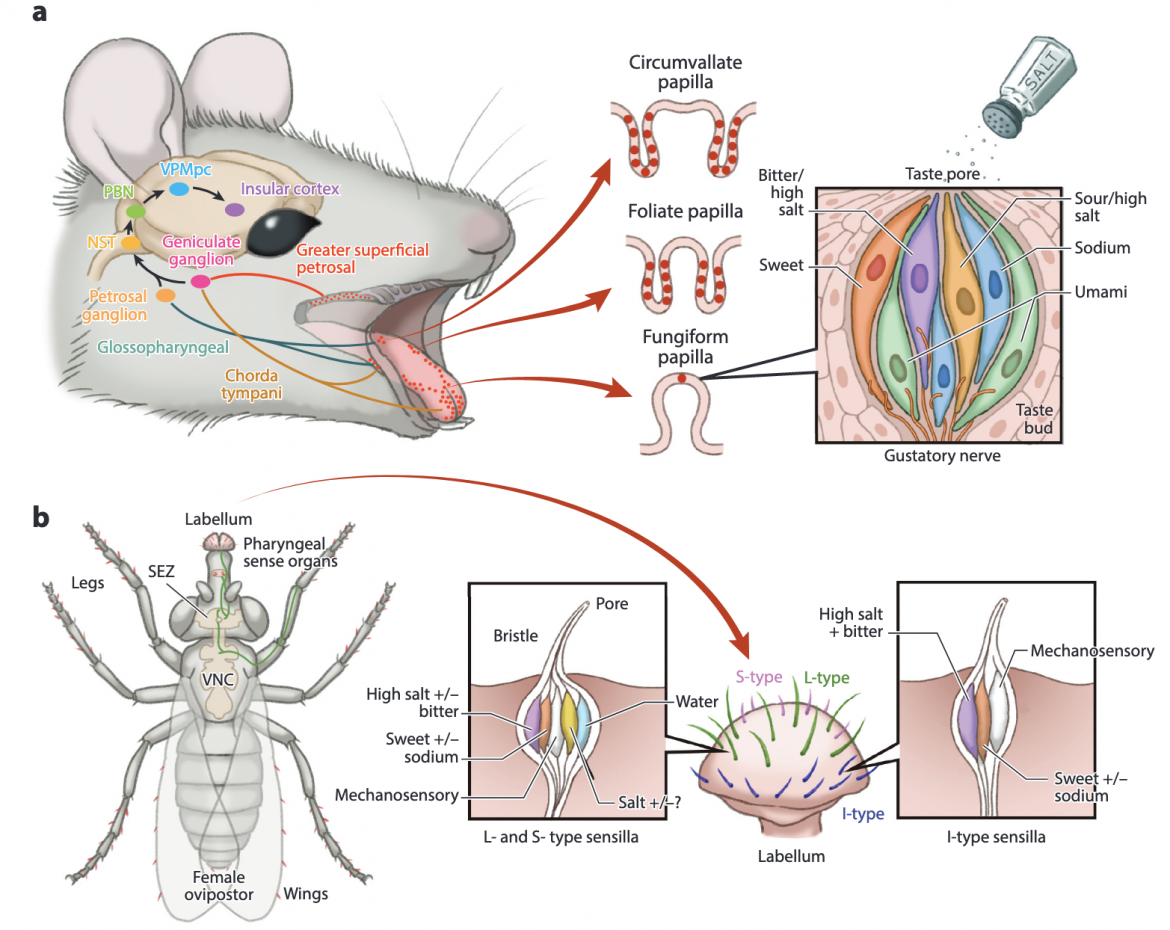
Figure 1 (a) Mouse taste anatomy. (Left) Diagram of the head of a mouse, illustrating the gustatory pathways originating from taste buds in the circumvallate, foliate, and fungiform papillae, through the chorda tympani, glossopharyngeal, and greater superficial petrosal nerves, the nucleus of the solitary tract (NST), the parabrachial nucleus (PBN), the parvicellular part of the ventroposterior medial nucleus of the thalamus (VPMpc), to the insular cortex. (Middle) Vertical section views of circumvallate, foliate, and fungiform papillae, illustrating the distribution of taste buds in each papilla. (Right) Diagram of a fungiform taste bud, illustrating different sensory taste cell types dedicated to basic tastes. Note that high salt taste is not sensed by dedicated taste cells but is sensed only by sour and bitter cells. (b) Fly taste anatomy. (Left) Diagram of a fly, illustrating distributed taste sensilla (red) in the labellum, pharyngeal sense organs, legs, wings, and female ovipositor. Green lines depict representative taste neuron axon projections to the subesophageal zone (SEZ) of the brain and to the ventral nerve cord (VNC). (Right) Lateral view of one labellar palp, with generalized diagrams of different sensillum types. Cell labels denote categories of responses found in each sensillum type: Long (L-) and short (S-) type sensilla generally have a sweet cell that also responds to sodium in some sensilla, a high salt or high salt/bitter combination cell, a water cell, and a fourth cell that also exhibits sensitivity to either attractive or aversive salts. Intermediate (I-) type sensilla have a combination high salt/bitter aversive cell and a sweet cell that may also detect sodium.
Preliminary drawings of Figure 1b by Celia Lau
Abstract
Salt taste, the taste of sodium chloride (NaCl), is mechanistically one of the most complex and puzzling among basic tastes. Sodium has essential functions in the body but causes harm in excess. Thus, animals use salt taste to ingest the right amount of salt, which fluctuates by physiological needs: typically, attraction to low salt concentrations and rejection of high salt. This concentration-valence relationship is universally observed in terrestrial animals, and research has revealed complex peripheral codes for NaCl involving multiple taste pathways of opposing valence. Sodium-dependent and -independent pathways mediate attraction and aversion to NaCl, respectively. Gustatory sensors and cells that transduce NaCl have been uncovered, along with downstream signal transduction and neurotransmission mechanisms. However, much remains unknown. This article reviews classical and recent advances in our understanding of the molecular and cellular mechanisms underlying salt taste in mammals and insects and discusses perspectives on human salt taste.